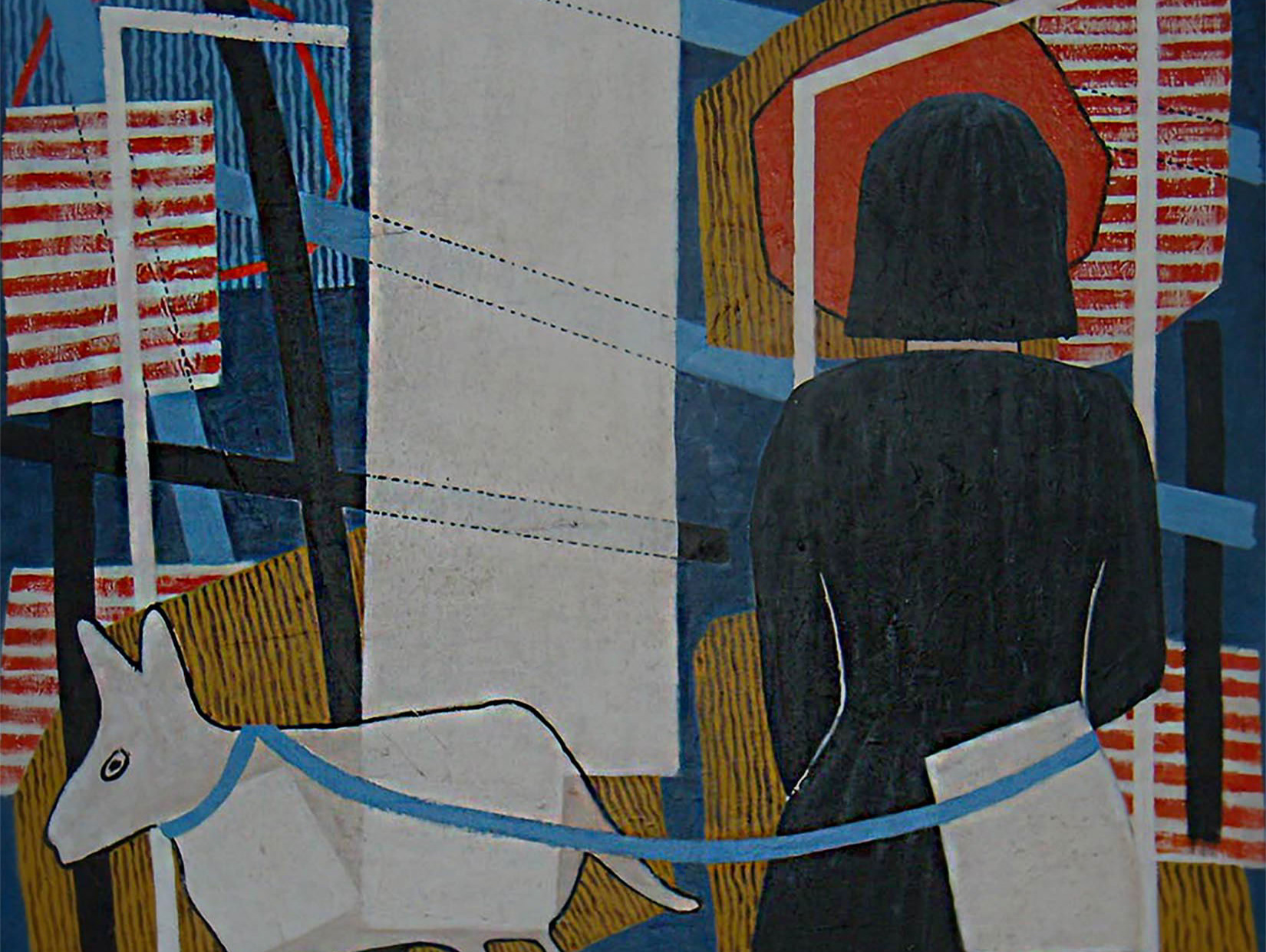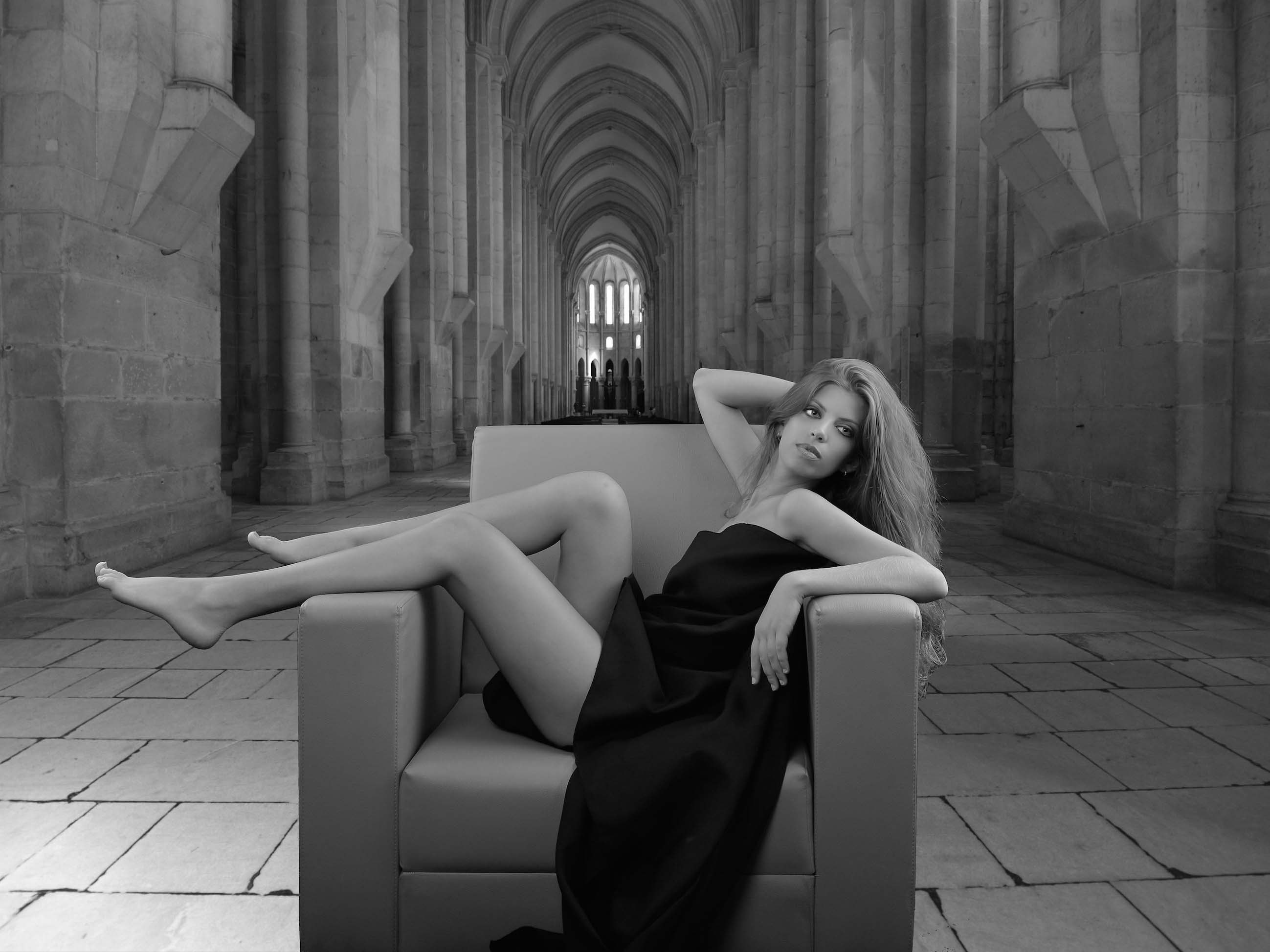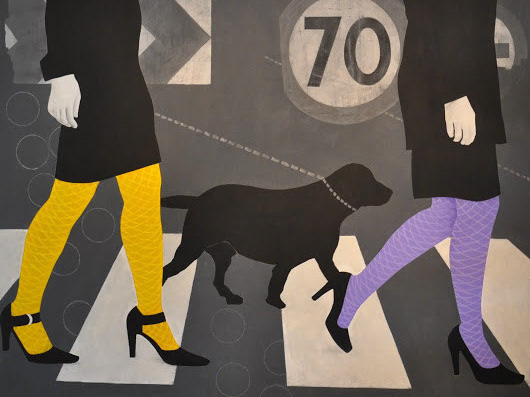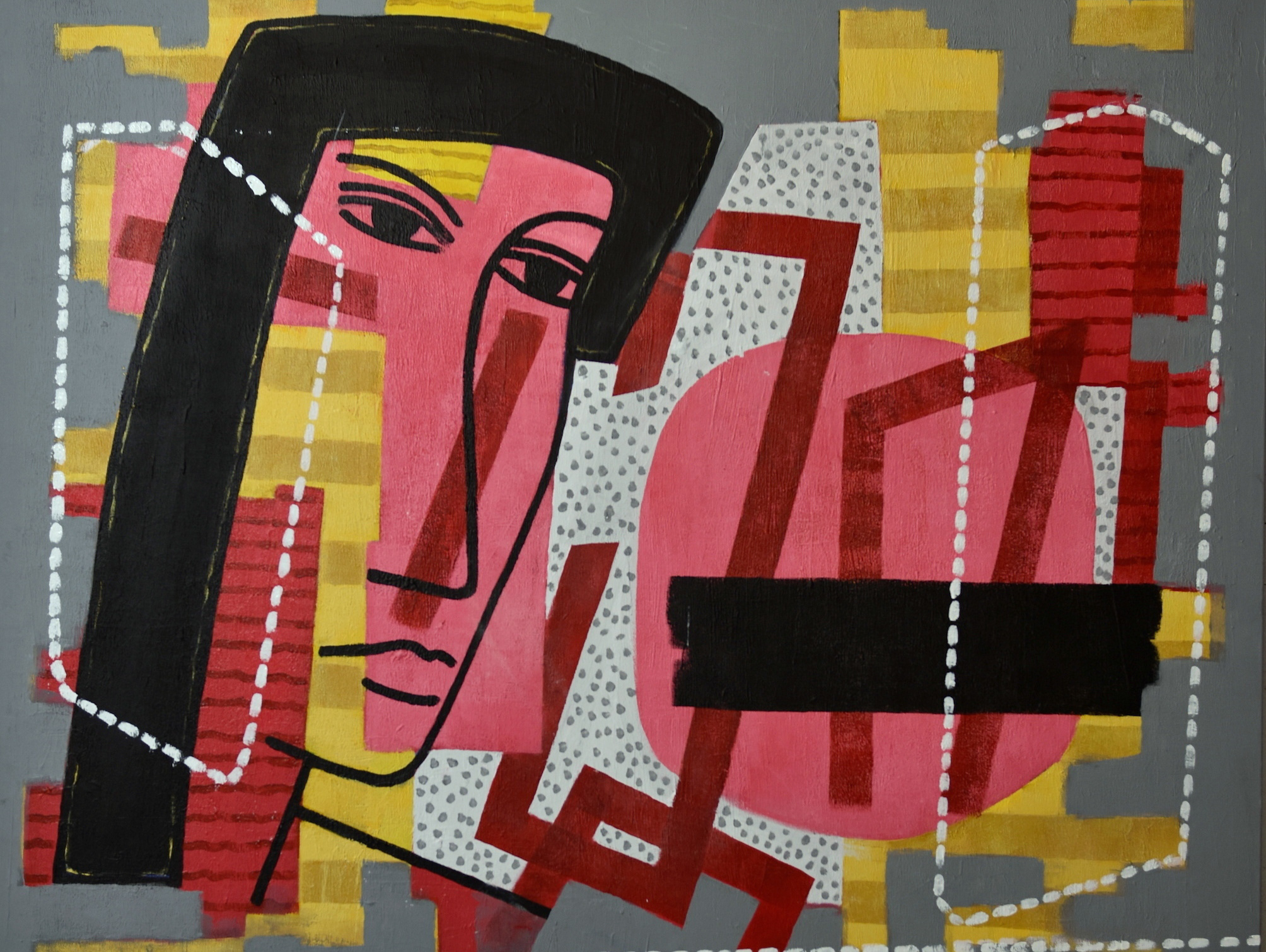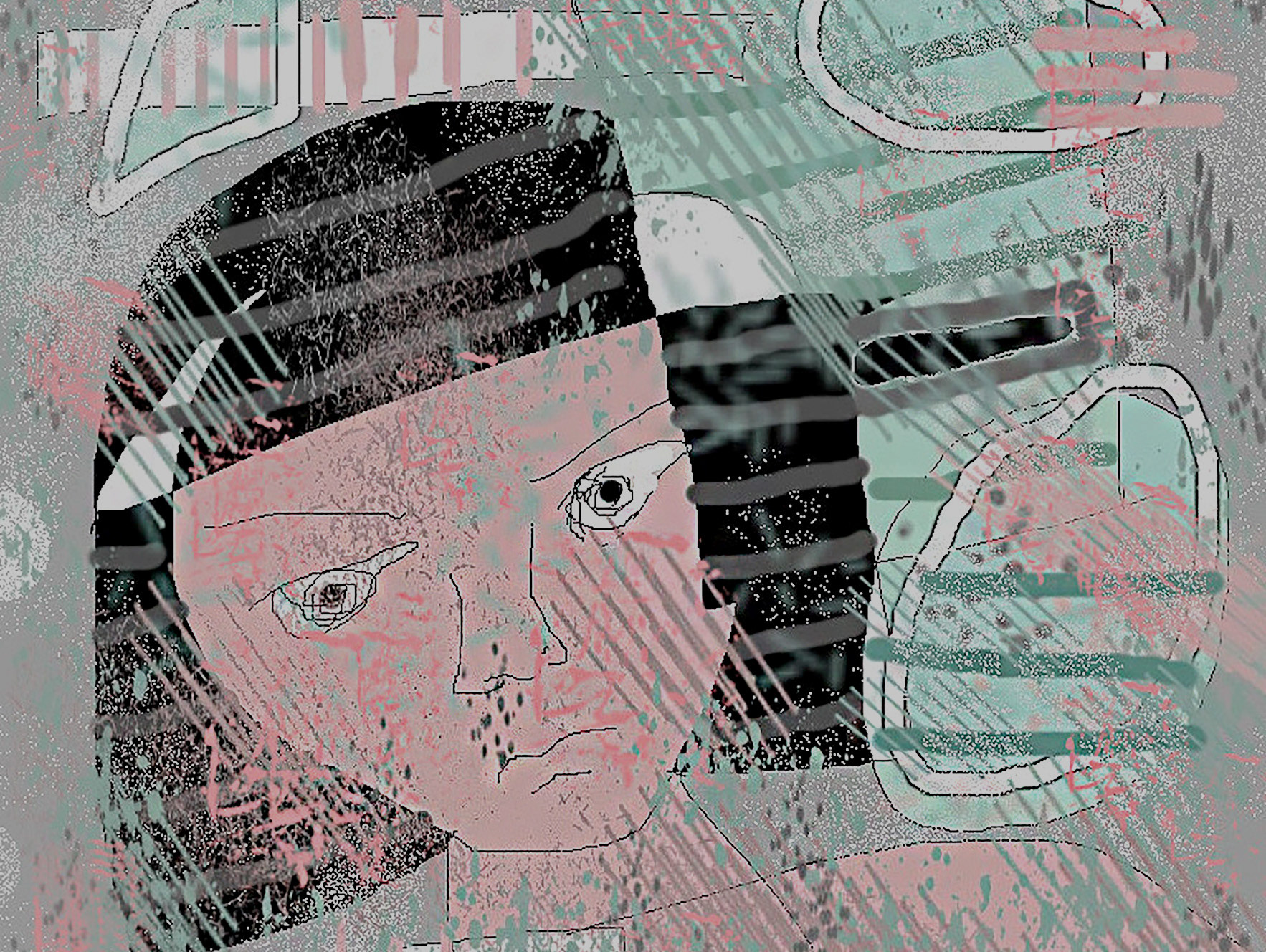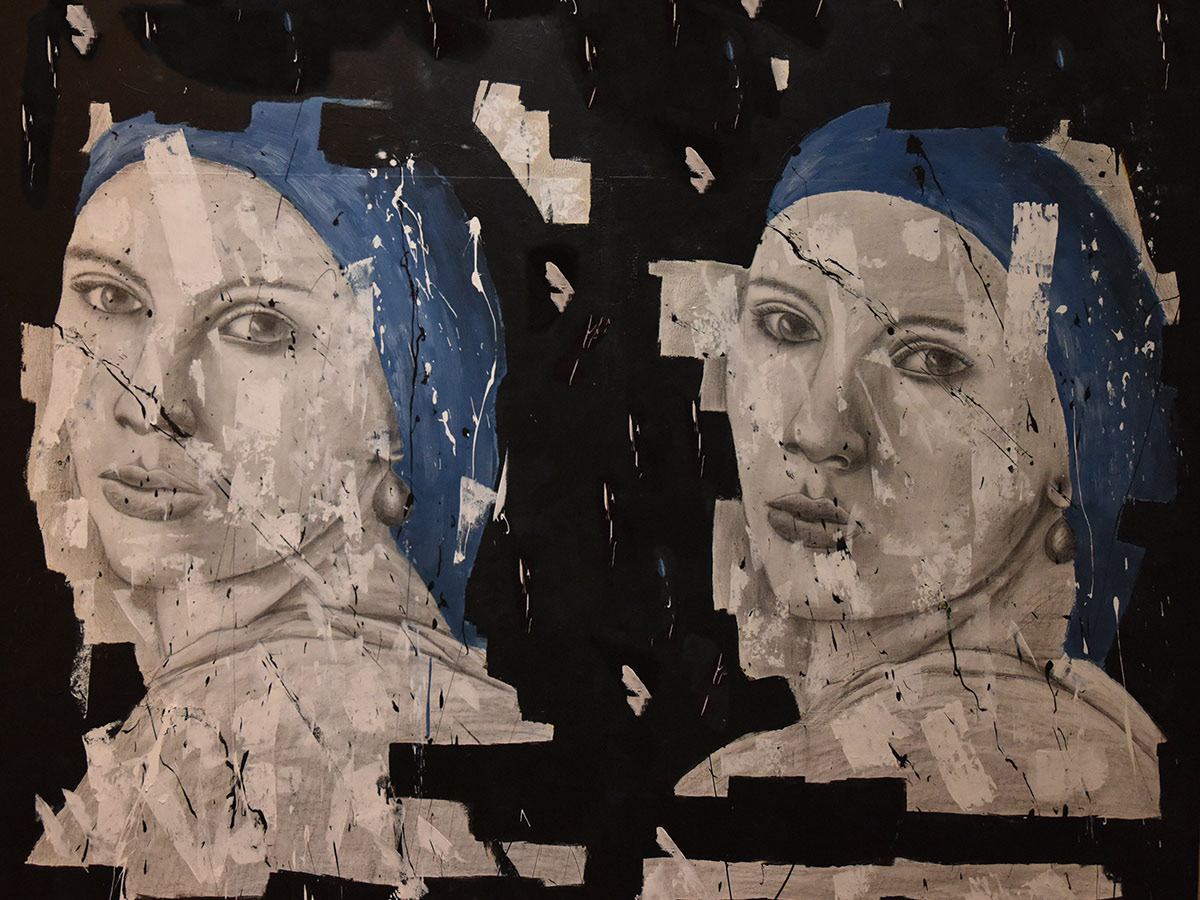SURREALISM
1967 . 1978
The Surrealism is adopted by the artist, surely influenced by some artists of this movement with whom he lived, in Lisbon, between 1966 and 1972. However, it will be in Paris and later on in Amsterdam, from 1973 to 1978, that all the conventions and preconceptions will be pushed away giving space to an expression free of all moral and rational preoccupations, on its way to meet the idea of André Bréton: the psychic automatism. Pintomeira began by a surrealistic and poetical mimesis, that he developed during the years 1970´s in Amsterdam, representing ruins, turgid shapes without a face, idealized bodies, perspectives, fantastic urban landscapes.
LEGENDS AND MYTHS | oil on canvas | 70x85x2cm | 1977 | Private Collection
The Winged Dancer Sleepwalker | oil on canvas | 7110x95x2cm | 1973 | Private Collection
The Ruined Dawn | oil on canvas | 70x95x2cm | 1973 | Private Collection
The Prodigal Son | oil on canvas | 110x120x2cm | 1973
The Sphinx | oil on canvas | 110x120x2cm | 1973
Lost Memories | 1974 | oil on canvas | 65x50cm | Private Collection
The Prodigal Son | oil on canvas | 100x110x2cm | 1973 | Private Collection
The Prodigal Son | oil on canvas | 100x110x2cm | 1973 | Private Collection
The Crucifixion - Study | oil on canvas | 100x110x2cm | 1973
Mirage | oil on canvas | 70x60x2cm | 1972 | Private Collection
Daphne being transformed into a laurel tree | oil on canvas | 130x110x2cm | 1978 | Private Collection
Leda and the Zwan | oil on canvas | 120x95x2cm | 1974 | Private Collection
Jupiter and Antiope | oil on canvas | 90x110x2cm | 1974 | Private Collection
Jupiter and Io | oil on canvas | 110x90x2cm | 1974 | Private Collection
Leda and the Zwan | oil on canvas | 120x110x2cm | 1977 | Private Collection
The Artist and the Model | oil on canvas | 90x110x2cm | 1974 | Private Collection
TNude on the catwalk | oil on canvas | 100x90x2cm | 1978 | Private Collection
The Johana's Dream | oil on canvas | 120x110x2cm | 1978 | Private Collection
The Johana's Dream | oil on canvas | 100x125x2cm | 1978 | Private Collection
The Johana's Dream | oil on canvas | 100x90x2cm | 1978 | Private Collection
The Enigma | oil on canvas | 110x125x2cm | 1977 | Private Collection
The Discretion | acr. on canvas | 105x90x2cm | 1977 | Private Collection
The Masquerade | 1978 | oil on canvas |115x100cm | Private collection
Hommage to Hieronymus Bosh | oil on canvas | 100x902cm | 1976 | Private Collection
Hommage to Lautreamont | Graphite water drawing | 65x50cm | 1976 | Private Collection
The Three Graces | Graphite water drawing | 65x50cm | 1976 | Private Collection
China Ink | 65x85cm | 1971| Private Collection
China Ink | 65x85cm | 1971| Private Collection
China Ink | 65x85cm | 1971| Private Collection
China Ink | 65x85cm | 1971 | Private Collection
China Ink | 65x85cm | 1971 | Private Collection
Graphite water drawing | 55x85cm | 1971 | Private Collection
Surrealist Period
Luis Chaves
Art critic
To analyse the passage of Pintomeira through his surrealist period, we need to plunge into the, already faraway, past of his artistic carrier. That happened, in an assumed way, between 1970 and 1978. After his connection to this artistic movement, Pintomeira, as an innovator and prolific artist, created an impressive series of other themes as the New Line, Contours, Landscape, Faces and Other Faces, Interiors and Exteriors, Cutouts, etc, and, lately, Photography. But it is the artist’s passage towards surrealism that will be analysed here. We need to go back to the seventies (1970) to get acquainted with his connection to surrealism. We discover his relation with Mário Cesariny, Raul Perez and others connected to the Portuguese surrealist movement, during his stay in Lisbon, between 1966 and 1972. Influenced by them, the author began to attend a collective atelier in the Mouraria district, where he drew and painted on cartoon, a significant quantity of figurative work marked by a surrealistic imagery that, with other colleagues, he showed and sold in what was called, back then, the non-conformist exhibitions, realized in the paved sidewalks of Rossio square. However, it will be in Paris and later on in Amsterdam, from 1973, that all the conventions and preconceptions will be pushed away giving space to an expression free of all moral and rational preoccupation, on its way to meet the idea of André Bréton, the psychic automatism: “… pure psychic automatism, in which, is made an attempt to express as much verbally as through writings or any other mean, the real mind’s mechanics. That which is dictated by thoughts, without any control of reason, excluding any kind of moral or aesthetical preoccupation.” Surrealism was multidisciplinary, influencing the visual arts, literature, theatre and cinema. But it was in the Painting that he mostly highlighted with the Salvador Dali, Max Ernest, René Magritte, Paul Delvaux, Marcel Duchamp and Man Ray artworks, amongst others.
Pintomeira remained in the surrealism for a brief time. He began in Lisbon, but, as we already mentioned, it was in Paris, through a closer contact with the surrealist work of the Belgium René Magritte and Paul Delvaux, and in Amsterdam, with the magical realism of Carel Willink and Peter Koch which determined its permanency, during the seventies remaining years, exploring
the world of the unconscious and the fantastic world of the dreams. The Painting, in the Dutch capital, was revealed, back then, through other vanguardist streams, like photo realism, neo expressionism and pop art. However, Pintomeira didn’t let himself overwhelmed by those vanguard movements. Stubbornly, he proceeded on his path, even knowing that the artistic world in Amsterdam was never blessed by the aesthetical expressions of the surrealist movement. In his atelier, in the Dutch capital, he ended up producing a series of surrealist artworks that took part in various exhibitions, the last one being realized at the Grand Palais des Beaux Arts in Paris, during the “Salon 78,” named Metamorphoses paying tribute to René Magritte. All these artworks are oil painted canvases of various dimensions, plain colours, dense but not primary, and others on paper, using graphite pencils, china ink, pastel, aguada thecnic, etc.
In that period, his artwork was based on the most diverse themes. Dominating constructions of oneiric expression, of dream, of distorted fantasy, where stands out a total mind’s freedom to represent compositions of an imagetic that floats over the reality, without respect for logic or reason. The chains of the unconscious break loose, allowing the painter to throw to the canvas a set of various images and visions which show no respect nor relation to reality. This absolute freedom of expression, escaping from the control of the ego or the reason, stimulates the author, in his digression across the world of fantasy. You can observe all this liberation in the artwork “Sonâmbulo Bailarino Alado” (Somnambulist winged ballet dancer), where Pintomeira built a path that floats over the city and ends abruptly into a heavy iron gate, half-open, with the padlock still closed and with giant eggs on the top of the two corpulent columns flanking it. On the way, we encounter shells of an enormous ceramic egg and one dislocated urban streetlamp. In the middle of all of that, dances a winged figure, not knowing the spectator why he stands there nor where he is going to. In other artworks, we’ll find other sources that were recurrently used by the artist, like the greek-roman mythology in “Leda e o Cisne” (Leda and the Zwan), Apolo e Dafné (Apollo and Daphne), Io e a Núvem (Io and the Cloud), or the bible in Regresso do filho pródigo (Return of the prodigal son), Crucificação (Crucifixion) and Pietá. Another element regularly used in its formal and symbolic construction are the eggs, “omne vivum ex ovo,” (everything begins with the egg) in Encenação da esfinge (The Sphynx Staging), Passeio da Procura (Search Tour) or, in the already cited, Sonâmbulo bailarino (Somnambulist winged ballet dancer).
In Amsterdam, the artist, seldom, frequented surrealist events because, as we already underlined, this movement did not take part in the Dutch artistic scene. Pintomeira visited, frequently, the Stedelijk Museum, (Museum of Modern Art and Contemporary Art) where, the world famous artistic director, Rudi Fuchs, dominated, and he rarely found, hanging on the walls, a painting from a highly regarded surrealist. The artistic current more alike to surrealism and that got a relevant importance in the Netherlands, was the Magic Realism. Pintomeira knew personally, in the beginning of the seventies decade, Carel Willink (1930-1983), the most important artist belonging to that movement. Having lived with and knowing very well his work, we become not surprised when we observe, in some works, traces from the Dutch magical realist. The formal representation and the construction of the magical fantasy that we can see in the Sphinx or in the Ruined Dawn, are two examples of what we stated above.
The Historian Alberto A. Abreu wrote about Pintomeira’s surrealist work: “Surrealism was one of the most passionately movements, being followed, long lasting, but it was also the most erroneous explaned one. As in the Barroc painters, fragments, colors, perspective, dicribed by or represented by them, are filled by semiotics, sometimes direct – are poesis picta ou picture poetica. A surrealist painting – mentioning Cadavre exquis – is possible of having a verbal “translation.” On the other hand, in a surrealist painting, who is in the foreground is the painter himself, a true natura naturans of the really objects that became painted objects. In fact, what the painter represents from himself are the dreams – that in a psychoanalytical vision express the sur-reallity where we can find the super ego, the ideals, what that in a nietzchean perspective, the social norms has coming to prohibiting and in a Freudian perspective has coming to castrating. The surrealism reproduces a construct oneiric and not the sub-conscious: “surrealism” is the transliteration of the French word “surrealisme,” that never pretended to be”sub-” but effectively “sur-realisme.”
In fact, the surrealism was one of more long lasting movement and even one of the more recurrent: we find, more or less, oneiric and sur- real suggestions in Bosh, in Arcimboldi, in Goya and in Klee. Connected to the COBRA group, Pintomeira begun by a surrealistic and poetical mimesis, that he developed during the years ‘70s-80s’, representing ruins, turgid shapes without a face, idealized bodies, perspectives, fantastic urban landscapes, some objects and icons that he took back from a recent mystic phase and a coeval of “immortalisation of the objects,” (quoting himself). These paintings, however, in order that its message arrives to the spectator, they can not suffer from any dysfunction and, because of it, they are absolutely classical in its shape.
In 1975, part of his surrealist artwork was exhibited in the town of his adolescence, in Viana do Castelo. This small town in the north of Portugal had, for the first time, contact with surrealist paintings. Pintomeira, living in Amsterdam, received an invitation from the Town Hall, in functions back then, through its Mayor and the Culture Councillor to realize an exhibition, inaugurating the Cultural Hall of the city. To make that possible, twenty four surrealist artworks came out of his atelier, in Holland, and once arrived in Viana do Castelo they got ready to be exposed. As the regional newspaper related, the exhibition was inaugurated with all due pomp and circumstance, arising enormous curiosity amongst the public that visited it. From this day on, the large room of the “Antigos Paços de Concelho” (Ancient Town Hall), which, in the past, was found always closed, came to be called the Cultural Hall, keeping until today on being opened to the public through various artistic and literature related manifestations.
Pintomeira would leave surrealism in 1978. His latest works already offer us a different figurative approach, less surrealistic, bringing an imagery already far from oneiric, day dreaming, as in Nude on the Catwalk.
Following other tendencies and leaving for other aesthetical expressions, the artist always left, in his future artworks, a small surrealist mark in the figurative drawing or the artwork’s formal construction. More precisely, he never was a realist in all themes produced after his surrealist period.
